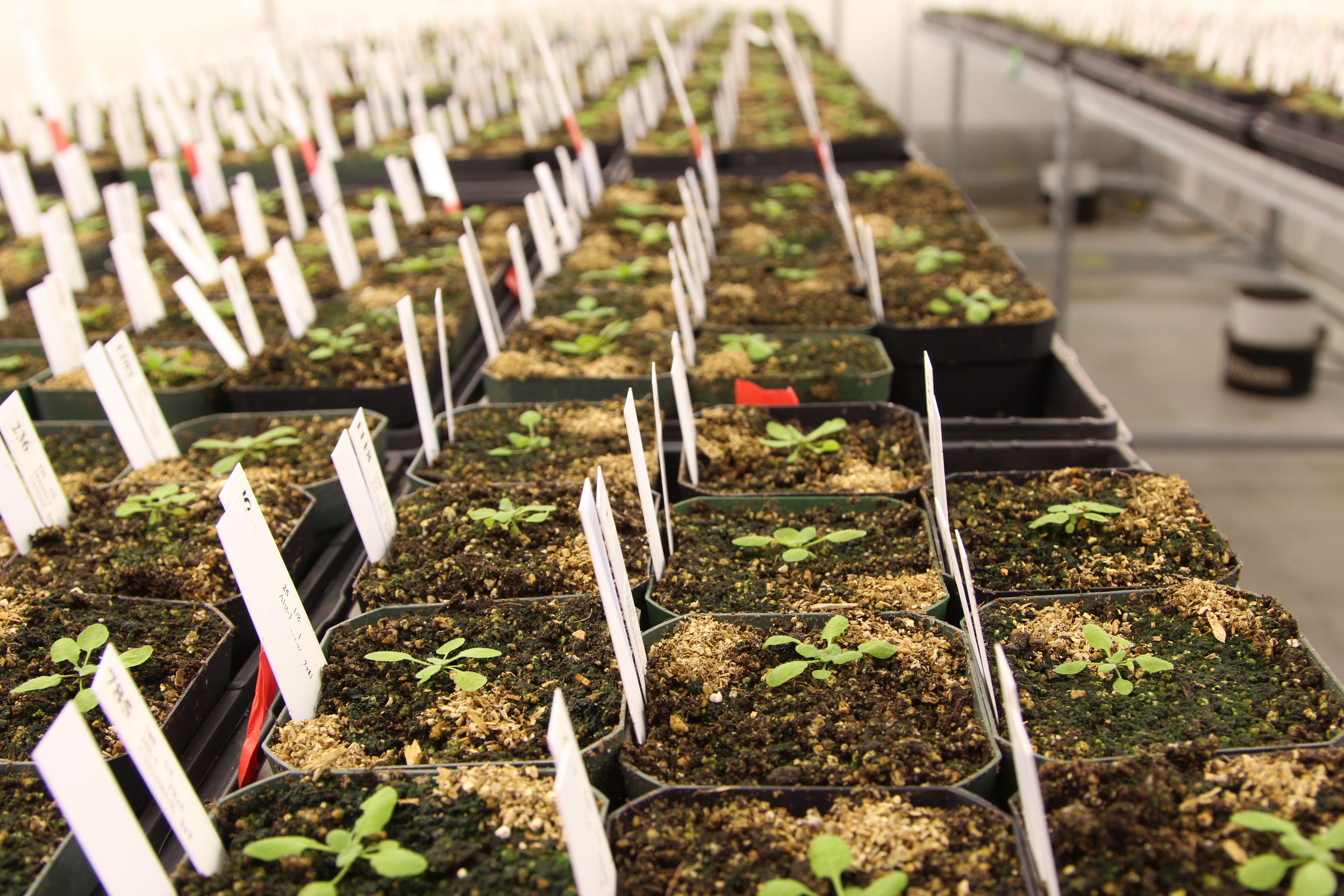Occurrences of spontaneous polyploidy within a species (autopolyploidy), or as a result of hybridization between species (allopolyploidy), generate opportunities to investigate how the duplication of genes and chromosomes impact the ecology and evolutionary trajectory of populations, species and communities. My postdoctoral work has led to a greater understanding of the predictability of the effects of autopolyploidy on morphological and ecological phenotypes.
I generated more than 100 independent newly-synthesized, or neopolyploid, individuals from over 50 wild Arabidopsis thaliana plants collected throughout its naturally occurring range. I then grew diploid and neopolyploid individuals of each of these ecotypes in a common environment to assess phenotypic variation between and among the ploidy levels of each ecotype at several stages of growth and development. This generated the largest and most complete dataset of phenotypic comparisons between neopolyploids and their diploid progenitors ever produced.
I found that ancestral diploid genotypes differed with respect to nine of 10 vegetative and reproductive traits, and were correlated with longitude and latitude of sampling location. Genome duplication had a significant overall effect on the same nine traits but the direction of effect was not always consistent with the expectation that polyploids are larger. The magnitude of the ploidy effect differed significantly among genotypes and was correlated to different degrees with the phenotype of the ancestral diploid.
This work shows that polyploidy can have highly variable effects on phenotype that are partially dependent on diploid genotype and phenotype. Strong genic-by-genomic interactions may accelerate early evolutionary change by generating phenotypic variance and suggest that success of polyploids is not driven by a singular fitness effect but, rather, is contingent upon the ancestral genotype. This study is the first of its kind at this scale and its results form a substantial part of the base of the research program I will bring to my next position. This work will have a broad impact across the fields of ecology, evolutionary biology, and crop science.
Below is a time-lapse video of part of the major grow-out described above, and a few pictures detailing this project in general.









